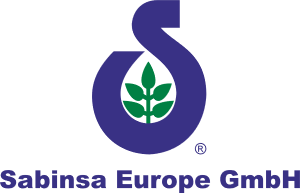According to a recent, Reuters report (June 21), researchers are conducting new, long-term studies to confirm the therapeutic properties of selenium.1
Background
Selenium was discovered in 1817 by Berzelius, a Swedish chemistry professor. The mineral is present in the earth’s crust and chiefly derived as a by-product of copper refinery. Depending on soil composition, selenium is most abundant in foods such as meats, fish, and grains.2-3
Benefits
For more than 40 years, selenium has been recognized as an essential nutrient. In 1957, Schwarz and Foltz4 established selenium as an essential trace element in nutrition for the prevention of disease.
Low dietary levels of selenium in animals and humans have been linked to several disease symptoms. In animals, selenium deficiency has been associated with muscular dystrophy in sheep and calves5, liver necrosis in rats4, liver and heart necrosis in pigs6, and pancreatic atrophy and exudative diathesis in chicks7. Human selenium deficiency has been documented in the pathogenesis and pathology of Keshan disease, a heart ailment observed in people of the Chinese province of Keshan, a region whose soil lacks adequate selenium levels.8 Myositis9 (muscle diseases characterized by inflammation and degenerative changes), pseudoalbinism10, whitening of the fingernail beds9, elevated creatinine kinase derived from muscles10, macrocytosis10 (the presence of abnormally large red cells in the blood), osteoarthropathy (Kashin-Beck disease)11, and an increased incidence of cardiovascular disease12 and cancer13 in humans are also associated with low selenium levels.
Organic Vs. Inorganic Selenium
Plants absorb selenium from the soil and convert it into organic forms that are easily assimilated. For example, L-(+)-selenomethionine, an organic compound, is the predominant form of selenium in wheat and cereals.14 L-(+)-Selenomethionine is rapidly and completely absorbed from the gastrointestinal tract.15
Inorganic forms of selenium include sodium selenite and sodium selenate; they are not normal food forms of selenium. In comparing L-(+)-selenomethionine (LSM) with its inorganic counterparts the following was determined: 1) LSM is significantly better absorbed and retained in the body than sodium selenite.15 2) In experimental animals supplemented with LSM, sodium selenite, and selenocysteine, the highest increase in tissue selenium levels was accomplished with LSM.16 In addition, studies have suggested that LSM has a slower, whole-body turnover in comparison to sodium selenite. This means there is greater efficiency in the reutilization of selenium in complex with methionine.15 Due to the role of methionine in aiding the safe metabolism of selenium, LSM is recognized as a safer form of selenium than sodium selenite.17

L-(+)-Selenomethionine
Research
A large number of research papers are published on selenium annually. Cancer prevention, antiviral defense, immune-system enhancement, arthritis, and coronary disease are some of the areas that have been explored. Of the studies conducted on the therapeutic benefits of selenium, Clark et al.18 serves as a landmark study. This 10-year study established selenium as an anticarcinogen in humans. Although selenium supplementation did not significantly affect the incidence of basal cell or squamous cell skin cancer, the focus of the study, it did significantly reduce total cancer mortality, total cancer incidence, and incidences of lung, colorectal, and prostate cancers in the selenium-treated group. Because selenium’s effects on cancer was not the original focus of the study, critics argue that this study does not confirm selenium's beneficial effects on cancer. Thus, this study has generated interest in funding follow-up research on selenium.
One follow-up study, funded by the National Cancer Institute (NCI) and coordinated by the Southwest Oncology Group (SWOG), is known as SELECT (Selenium and Vitamin E Cancer Prevention Trial). It is a 12-year, prostate cancer study conducted with 32,000 men from the United States, Canada and Puerto Rico. The IND number for this study is 58,212. The exclusive form of selenium chosen by the NCI for this study is Sabinsa’s Selenium SeLECT®. Sabinsa will supply capsules of Selenium SeLECT® as well as the placebo for the trial.
Selenium SeLECT®, a registered trademark of Sabinsa Corporation, is supplied as two grades of L-(+)-Selenomethionine, (LSM) an organic, bioavailable and fully com-plexed (not a dry blend of selenium and methionine) form of selenium. Selenium SeLECT® Pure contains a minimum of 400,000 mcg of elemental selenium (40%) per gram, and Selenium SeLECT® 5000 (DCP blend), a trituration of LSM and dicalcium phosphate, contains a minimum of 5,000 mcg of elemental selenium (0.5%) per gram. Both grades are yeast and allergen free andconform to USP monograph standards.
References:
- Vaporean, C. (2001) Selenium research points to curative powers. Reuters.
- Selenium. http://www. encyclopedia.com
- Selenium in diet. http://www.thirdage.adam.com/ency/article/002414fod .htm
- Schwarz, K. et al. (1957) J. Am. Chem. Soc. 79, 3292-3293.
- Muth, O. et al. (1958) Science 128, 1090.
- Eggert, R. et al. (1957) J. Anim. Sci. 16, 1037.
- Thompson, J. et al. (1970) J. Nutr. 100, 797-809.
- Li, G. et al. (1985) Hum. Pathol. 16, 602-609.
- Kien, C. et al. (1983) Am. J. Clin. Nutr. 37, 319-328.
- Vinton, N. et al. (1987) J. Pediatr. 111, 711-717.
- Giangqui, Y. et al. (1988) World Rev. Nutr. Diet 55, 98-152.
- Andrews, J. et al. (1981) Selenium and cadmium status in blood of residents from low selenium high cardiovascular disease area of southeastern Georgia. In: Spallholz, J. et al. Selenium in Biology and Medicine. Westport, CT, AVI Publishing, 348-353.
- Garland, M. et al. (1994) The epidemiology of selenium and human cancer. In Frei, B. (ed.) Natural Antioxidants in Human Health and Disease. San Diego, CA, Academic Press, 263-281.
- Olson et al.(1970) Phytochemistry 9, 1181-1188.
- Swanson, C. et al. (1991) Am. J. Clin. Nutr. 54, 917-926.
- Deagan, J. et al. (1987) J. Nutr. 7, 91-98.
- Ip, C. (1988) J. Natl. Cancer Inst. 80, 258-264.
- Clark, L. et al. (1996) JAMA 276, 1957-1963.







